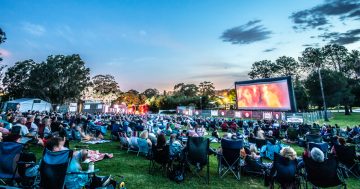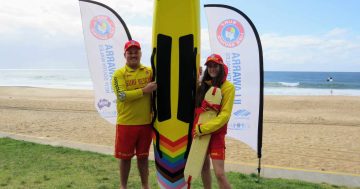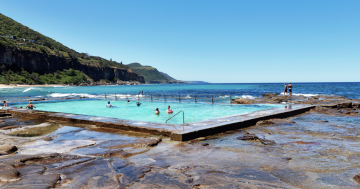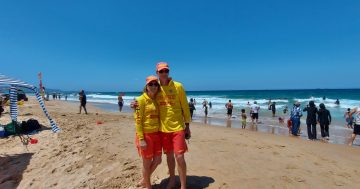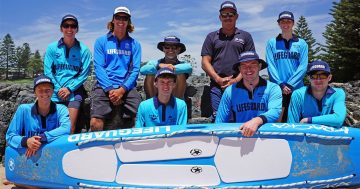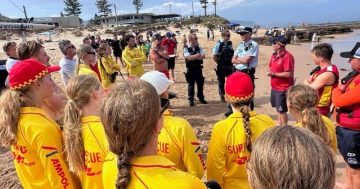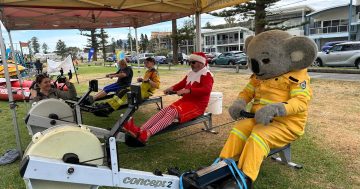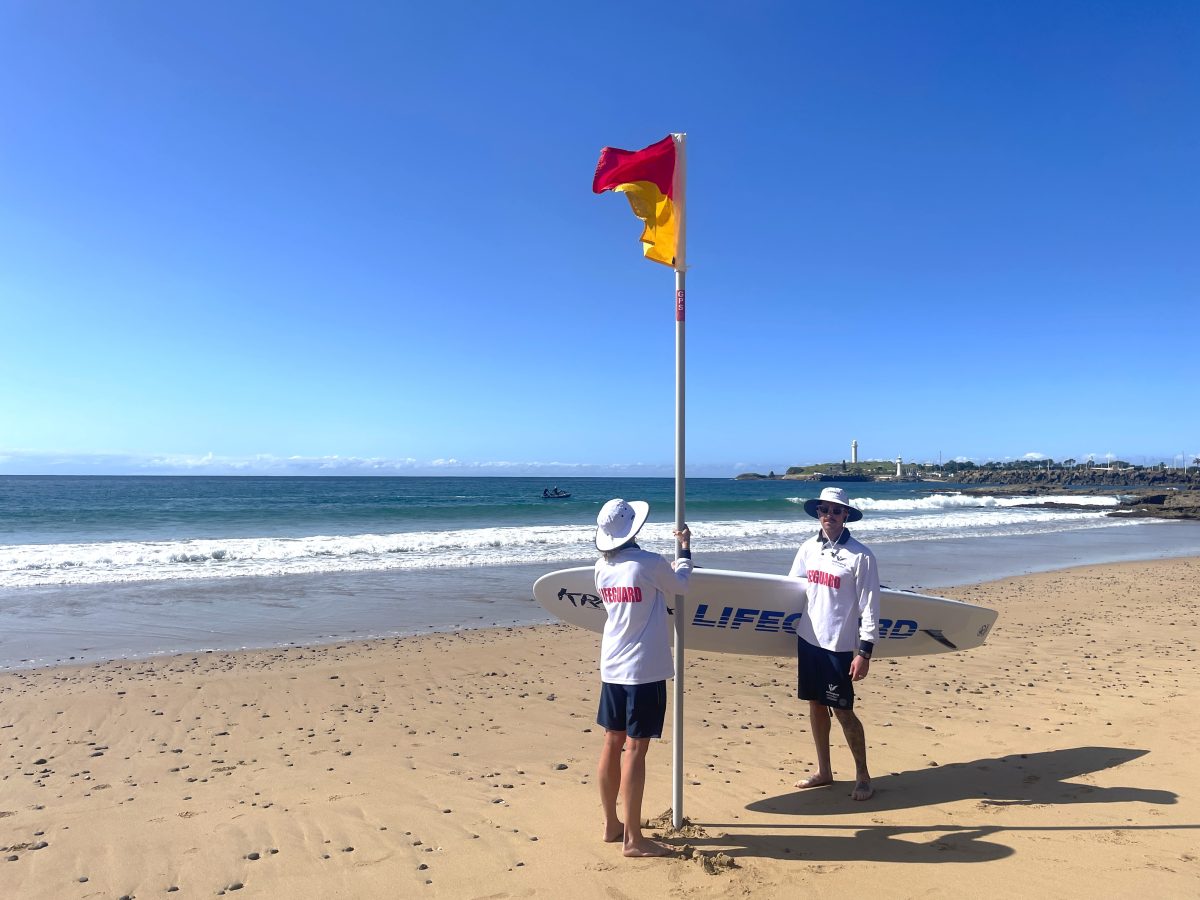
Wollongong City Council lifeguards are preparing for large crowds as the weather warms up. Photos: Keeli Royle.
Local lifeguards are pleading with the Illawarra community to swim only in patrolled areas this summer as they prepare for a bumper beach season, but Wollongong’s Lord Mayor is calling for a better statewide approach to surf safety to educate those flocking to our coastline and take pressure off local resources.
With the weather warming up and the red-and-yellow flags set to return to 17 patrolled beaches in the Wollongong area at the start of the school holidays, council lifeguards and local Surf Life Saving volunteers will play a vital role in protecting people who are seeking a reprieve from the heat.
But they’re still faced with extreme challenges every year, as many people disregard the lifesavers’ most basic instruction – to swim between the flags.
Eli Keenan has been a lifeguard for 11 seasons and said when people did the wrong thing, it stretched the patrols’ resources.
“We have our red-and-yellow flags, which is typically the safest area. It is not foolproof, it is the ocean, but that’s an area that we designate to be the swimming area,” Eli said.
“What will happen is if people are swimming outside the red-and-yellow flagged area, it can preoccupy the lifeguards, meaning we can’t actually do our job efficiently.”
After 12 seasons as a lifeguard, rescues at non-patrolled areas are still what Holly Lane found the hardest.
“The toughest rescue would be at Puckey’s, which is an unpatrolled section of the beach, and we get quite a lot of bigger families with multiple people swimming in that area and usually when they get into trouble, it’s a number of people that get into trouble,” Holly said.
“So you paddle out there and you’ve got three, four, five people hanging on your board waiting on back-up to come and help you. They’re probably the bigger rescues that I’ve dealt with.”
Holly said neighbouring patrols had to continually attend the area to get people out of the water.
“I work at Fairy Meadow beach, so we go down every hour on the hour and if there is anyone swimming, we give them a whistle, ask them to come in, and explain the reasons we don’t want them to swim in that area,” she said.
“North Wollongong also does hourly patrols on the half-hour so there’s usually a lifeguard there every half-hour trying to get people out.”
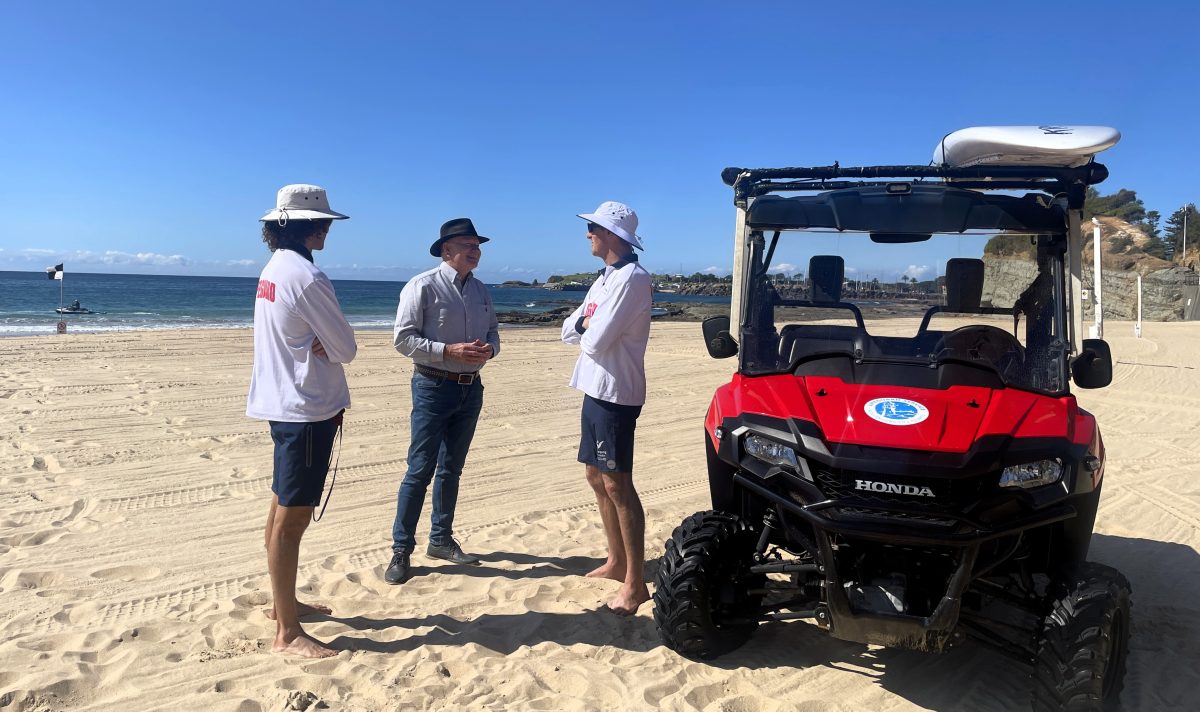
Lord Mayor Gordon Bradbery speaks to council lifeguards ahead of the patrolling season.
And despite lifeguards’ attempts to monitor the area, the consequences can be fatal even for strong swimmers.
“If you’re body surfing and hit a sandbank and you’re knocked unconscious, if there’s no-one around to help you it’s going to take the lifeguard a really long time to get there and by that stage you’ve probably inhaled a lot of water,” Holly said.
“Or if you get run over by a surfer, that can cut the femoral artery, you can bleed out really quickly.”
“There’s also sharks as well, they’re always in the ocean. We get the first notification when they’re there so we can call people in, whereas in unpatrolled areas you have to figure that one out on your own.”
Wollongong Lord Mayor Gordon Bradbery said although council lifeguards monitored the beaches Monday to Saturday during swim season, finding Surf Life Saving volunteers continued to be a challenge right across the Illawarra and Shoalhaven.
He said the ”no flags, no swim” rule helped maximise the lifeguards we have to make the safest environment possible.
“Getting that message across of course is a big challenge,” Cr Bradbery said. “I just say we all have a responsibility for the safety of not only ourselves but our families and specifically our children to make sure that we swim in the safest places and that is where the flags are and where the beaches are patrolled.”
But with so many people coming from inland areas, or having moved from overseas, relaying messages and educating communities have their challenges.
“We need to make better use of the culturally and linguistically diverse community media,” Cr Bradbery said. “We’re bringing large amounts of people into this country post-COVID to restore that flow of incoming skills and requirements but at the same time, those people don’t have English as their first language.
“I think that is the responsibility of the State Government more than just councils because it spans the entire state and people are tempted during summer to come and make use of the beautiful coastline that we have.”
And he said whether you’re on the sand or in the sea, by just doing the right thing everyone can make the beach safer and more enjoyable.
“If we’re going to enjoy a beach, we have to do so with courtesy and respect for others’ needs, and not only that but not to put pressure on the lifeguards and everyone does their part to make sure that it’s a great experience.”
Patrols return on Saturday, 23 September, at 17 Wollongong beaches. North Wollongong Beach is patrolled all year round.
For more details, visit the Wollongong City Council website.








